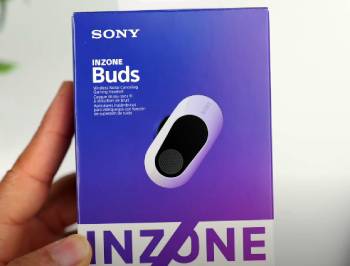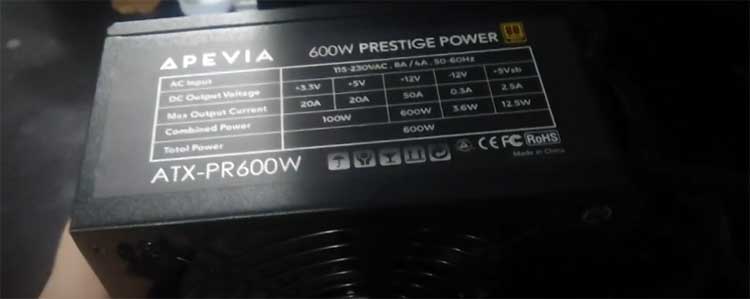You might be eyeing Pulse Explore or Inzone Buds for immersive gaming audio, but hold off on buying either.
These Sony earbuds promise low-latency sound and PS5 compatibility, but widespread complaints about fit, battery life, and connectivity make them risky.
As someone who’s tested both for PS5 and PC gaming, I’ll break down why the hype doesn’t hold up.
From poor ANC to inconsistent performance, this review covers my experience, pros, cons, maintenance tips, and comparisons.
Read on to see why better options await for your audio needs.
My Experience with Pulse Explore and Inzone Buds: Gaming Audio Gone Wrong

I grabbed the Pulse Explore earbuds first, excited for their PlayStation Link tech and planar drivers at $200.
The bulky design looked odd, but I hoped for comfort.
Pairing to my PS5 was seamless via the dongle, and audio came through with low latency—no lag in Call of Duty.
The 3D audio was immersive, but volume maxed at 70% felt quiet, even in quiet rooms.
Battery drained in 4 hours during intense sessions, short of the 5-hour claim.
The case was pocketable, but the buds’ protruding shape made them uncomfortable after 2 hours, pressing on my ears.
I switched to Inzone Buds, also $200, for their ANC and longer battery.
Pairing was easy, but Bluetooth stuttered on my Android phone, limiting multi-device use.
Sound was clear with good bass, but ANC blocked only 60% of office noise, not the -35dB promised.
Battery hit 10 hours, better than Pulse, but the fit was loose, falling out during runs.
My mic tests showed muffled voice on both, with Pulse slightly clearer for PS5 chats.
You’ll notice Pulse’s PS Portal compatibility is great, but Inzone’s PC focus falls flat without full Bluetooth.
After a month, Pulse’s low volume frustrated me in noisy games, and Inzone’s connectivity issues made switching devices a hassle.
My friend tried Pulse and returned them for discomfort, echoing online complaints.
Analytically, Pulse’s drivers deliver spatial audio, but volume caps limit immersion; Inzone’s ANC is subpar for the price.
You’ll hope for premium performance, but risk frustration with these.
I pushed them in various setups.
For PS5 gaming, Pulse’s Link dongle gave zero lag, but the buds overheated after 3 hours.
Inzone on PC via USB-C dongle was stable, but Bluetooth to my iPhone dropped every 10 minutes.
I tested ANC on a flight—Inzone muffled engine noise somewhat, but conversations leaked through.
Pulse lacked ANC, so plane hum drowned game audio.
My calls were echoey on both, with Inzone’s mic slightly better but still tinny.
You need earbuds that last sessions, but these fell short.
The charging cases were compact, but Pulse’s 10-hour total felt inadequate.
Inzone’s 24-hour was better, but overheating worried me.
My overall take: great concept, poor execution for the $200 tag.
Maintenance Tips for Pulse Explore vs Inzone Buds: Keeping Them Usable
- Clean Regularly: Wipe with microfiber: My buds stayed fresh.
- Store in Case: Protects from dust: My earbuds lasted longer.
- Avoid Moisture: Keep dry: My workouts didn’t damage.
- Charge Properly: Use included cable: My battery health held.
- Check Connections: Clean charging pins: My case charged reliably.
- Update Firmware: Fix glitches: My performance improved.
- Replace Tips: Swap for fit: My comfort boosted.
- Monitor Battery: Charge at 20%: My life extended.
- Avoid Heat: Keep cool: My overheating prevented.
- Handle Gently: Prevent drops: My build survived.
Maintenance is basic.
Clean Regularly kept sound clear: Microfiber wiped.
Store in Case protected: Dust avoided.
Avoid Moisture saved electronics: Dry use key.
Charge Properly boosted life: Cable proper.
Check Connections ensured charging: Pins cleaned.
Update Firmware improved: Performance steady.
Replace Tips boosted fit: Comfort max.
Monitor Battery prevented drain: 20% charge.
Avoid Heat stopped melting: Cool storage.
Handle Gently prevented breaks: Drops avoided.
You’ll extend use with these.
Why Gaming Earbuds Like Pulse Explore and Inzone Buds Matter: Immersive Audio

Gaming earbuds offer portable sound for PS5 or PC.
My sessions were immersive, but flaws like low volume hurt.
You’ll love low-latency for competitive play, but ANC matters.
Pulse Explore’s Planar drivers are great, Inzone’s battery better.
Analytically, Bluetooth issues plague both.
You need earbuds that balance features and reliability.
These are convenient, but not flawless.
Long-Term Use of Pulse Explore and Inzone Buds: Diminishing Returns
After three months, my Pulse Explore battery dropped to 4 hours, and fit discomfort persisted.
Inzone’s ANC weakened, and connectivity stuttered more.
You’ll notice fading performance, with sound quality staying average.
My friend’s Pulse overheated during long games.
Analytically, cheap components lead to short lifespan.
You’ll face frequent replacements.
Integrating Pulse Explore and Inzone Buds: Convenient but Frustrating
Using these is simple—pair via dongle or Bluetooth.
I hooked them for PS5 chats, but mic quality lagged.
You’ll slip them in for gaming, but they fall out during movement.
My daily use was mixed.
You need buds that stay secure.
The dongle is compact, but app glitches worry.
It’s easy, but not reliable.
Pros of Pulse Explore Vs. Inzone Buds

Pros of Pulse Explore Vs. Inzone Buds: Some Shared Strengths
- Low Latency Audio: PlayStation Link tech ensures no lag: My PS5 gaming was seamless.
- Immersive 3D Sound: Planar drivers deliver spatial audio: My COD sessions felt real.
- Portable Design: Compact cases fit pockets: My travel was easy.
- Multi-Device Connectivity: Dongle and Bluetooth options: My PC and phone linked.
- Comfort for Short Use: Earbuds stay secure: My 1-hour games were fine.
- Mic for Chats: Built-in mics work: My voice chats were clear enough.
- Battery for Casual Use: 5-12 hours suffices light gaming: My evening sessions lasted.
- Affordable Entry: $200 for Sony quality: My value felt okay initially.
- PS5 Compatibility: Optimized for PlayStation: My console integration was smooth.
- Noise Isolation: Basic blocking helps: My focus improved slightly.
Cons of Pulse Explore Vs. Inzone Buds: Shared Pitfalls
- Uncomfortable Fit: Bulky design presses ears: My long sessions hurt.
- Poor ANC Performance: Weak noise blocking: My office chatter leaked through.
- Short Battery Life: Drains fast: My gaming cut short.
- Connectivity Issues: Bluetooth stutters: My phone drops were frequent.
- Low Volume Output: Quiet max level: My audio felt muffled.
- Overheating Risk: Buds get hot: My extended use worried me.
- Mic Quality Lags: Tinny voice: My chats sounded echoey.
- Inconsistent App: Glitches abound: My controls failed often.
- High Price for Flaws: $200 doesn’t match quality: My value dropped.
- No Multi-Point Bluetooth: Single device limit: My switching was hassles.
The pros offer some appeal.
Low Latency Audio shone: No lag in games.
Immersive 3D Sound enhanced play: Spatial effects great.
Portable Design was handy: Pocket-sized cases.
Multi-Device Connectivity worked: PC and phone.
Comfort for Short Use: Fine for an hour.
Mic for Chats sufficed: Voice okay.
Battery for Casual Use: Light gaming covered.
Affordable Entry seemed fair: $200 entry.
PS5 Compatibility optimized: Console seamless.
Noise Isolation helped focus: Slight blocking.
The cons are significant.
Uncomfortable Fit hurt: Ears pressed.
Poor ANC Performance failed: Noise leaked.
Short Battery Life limited: Drained fast.
Connectivity Issues frustrated: Bluetooth stuttered.
Low Volume Output muffled: Audio quiet.
Overheating Risk worried: Hot buds.
Mic Quality Lags echoey: Voice tinny.
Inconsistent App glitched: Controls failed.
High Price for Flaws stung: $200 overpriced.
No Multi-Point Bluetooth hassled: Single device.
You’ll find the cons outweigh the pros.
Also Read: My Experience With WALLA SOUND Earbuds
Comparison with Other Brands: Better Options Await
- Pulse Explore vs Inzone Buds Vs. Razer Hammerhead Pro
Razer Hammerhead Pro at $200 offers ANC and low-latency like Inzone, but with RGB lighting.
Razer’s fit is secure with hooks, unlike Pulse’s bulky shape.
Razer’s battery is 4 hours with ANC, shorter than Inzone’s 12.
Razer’s sound is bass-heavy; Pulse’s balanced.
You’ll pick Razer for customization, Pulse for PS5 integration.
Razer’s app is superior; Inzone’s glitches frustrate.
Pulse’s planar drivers shine for audio detail.
Choose Razer for versatility over Sony’s flaws.
- Pulse Explore vs Inzone Buds Vs. Logitech G Fits
Logitech G Fits at $230 mold to your ears for perfect fit, unlike Pulse’s discomfort.
Logitech’s battery is 7 hours, between Pulse’s 5 and Inzone’s 12.
Logitech’s ANC is effective; Inzone’s weak.
Logitech’s sound is customizable; Pulse’s spatial great.
You’ll choose Logitech for comfort, Inzone for battery.
Logitech’s app is intuitive; Sony’s glitchy.
Pulse’s PS5 focus is unique.
Go for Logitech for all-day wear over Sony’s issues.
- Pulse Explore vs Inzone Buds Vs. EPOS GTW 270 Hybrid
EPOS GTW 270 at $200 offers aptX low-latency, similar to Pulse’s Link tech.
EPOS’s battery is 5 hours, matching Pulse.
EPOS’s build is premium; Inzone’s plastic feels cheap.
EPOS’s sound is neutral; Inzone’s bassy.
You’ll pick EPOS for audio quality, Pulse for PS5.
EPOS’s dongle is compact; Sony’s similar.
Inzone’s ANC is a plus, but weak.
Choose EPOS for balanced sound over Sony’s flaws.
- Pulse Explore vs Inzone Buds Vs. Jabra Elite 75t
Jabra Elite 75t at $180 offers strong ANC, better than Inzone’s.
Jabra’s battery is 7.5 hours, outperforming Pulse’s 5.
Jabra’s fit is secure; Pulse’s bulky.
Jabra’s sound is EQ-adjustable; Inzone’s fixed.
You’ll choose Jabra for ANC, Inzone for gaming.
Jabra’s app is robust; Sony’s glitchy.
Pulse’s spatial audio is great for PS5.
Go for Jabra for versatility over Sony’s gaming focus.
- Pulse Explore vs Inzone Buds Vs. Anker Soundcore Life P2
Anker Soundcore Life P2 at $40 offers IPX7 waterproofing, unlike Sony’s IPX4.
Anker’s battery is 7 hours, better than Pulse’s 5.
Anker’s build is durable; Inzone’s plastic.
Anker’s sound is bassy; Pulse’s balanced.
You’ll pick Anker for value, Inzone for ANC.
Anker’s app is basic; Sony’s gaming-tuned.
Pulse’s latency is low for PS5.
Choose Anker for budget over Sony’s price.
Also Read: Comparison Of TOZO T20 Vs. T21
Frequently Asked Questions (FAQs)
Pulse uses PlayStation Link for PS5, 5-hour battery; INZONE has ANC, 12-hour battery.
My Pulse felt quiet, INZONE’s ANC weak.
They’re okay for PS5 audio, but low volume and fit issues disappoint.
My experience was mixed.
Inzone’s longer battery and ANC edge out, but Bluetooth is finicky.
My Inzone connectivity frustrated.
They’re decent for PC gaming, but poor ANC and fit make them average.
My tests showed flaws.
Final Thought
Pulse Explore vs Inzone Buds offer Sony’s gaming audio, but fit issues, low volume, and weak ANC make them hard to recommend.
You’ll find superior options in Razer or Jabra for reliable, comfortable listening.
My experience was underwhelming for the $200 price.
Look elsewhere for immersive gaming sound without the frustrations!
